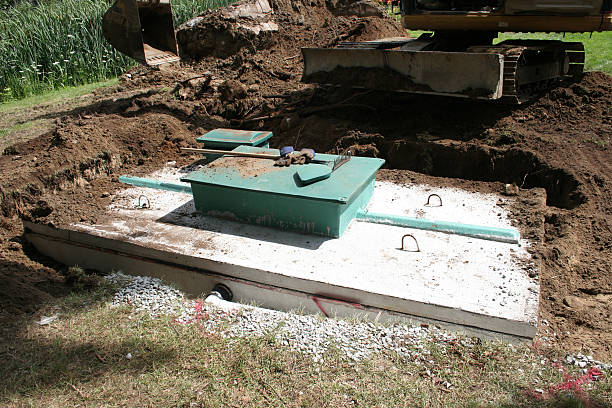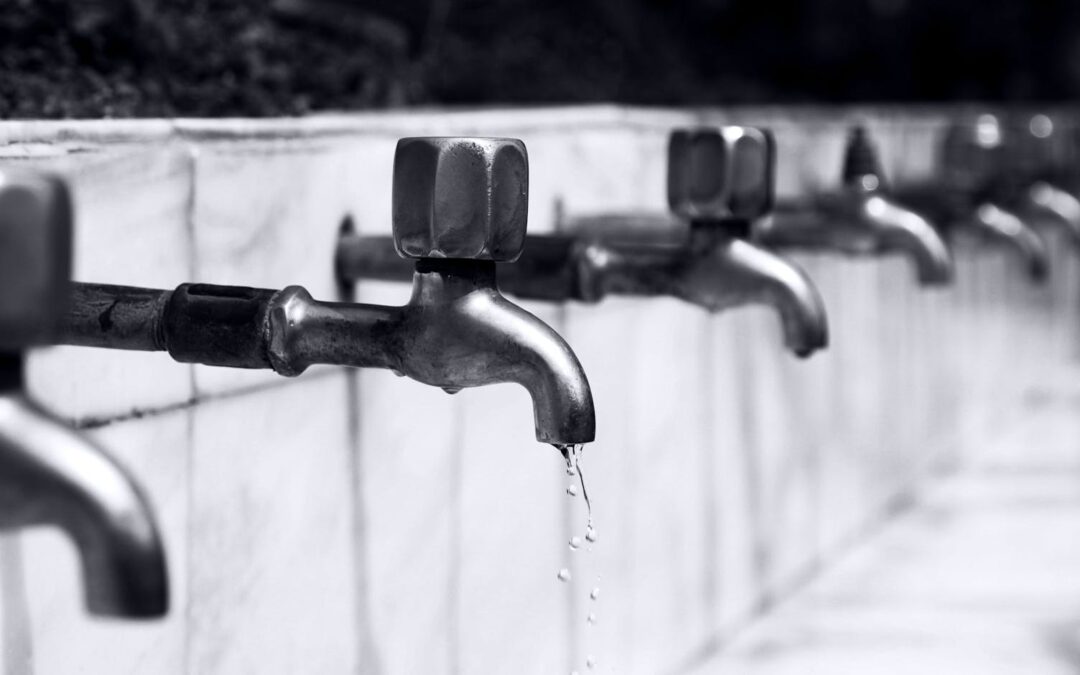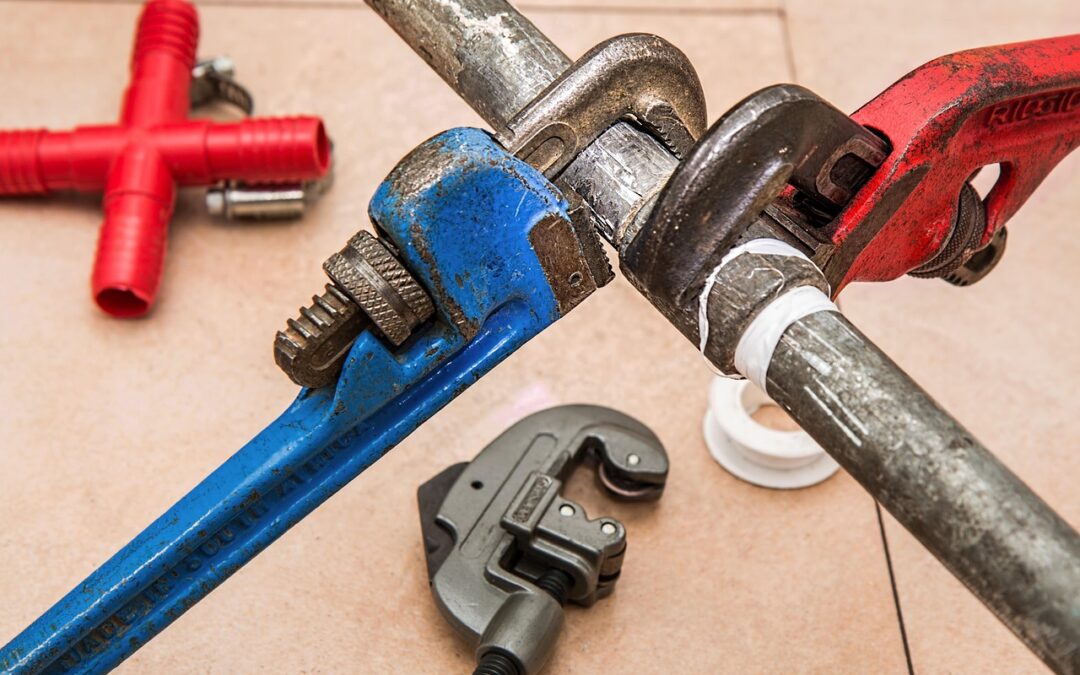Septic systems are one of the most common ways to dispose of sewage. They are used in areas that do not have access to municipal sewer systems. A septic tank collects and treats the wastewater from your house before it is released into the soil. This blog post will discuss everything you need to know about septic systems! We will cover what they are, how they work, and how to install and maintain them!
What Is A Septic System?
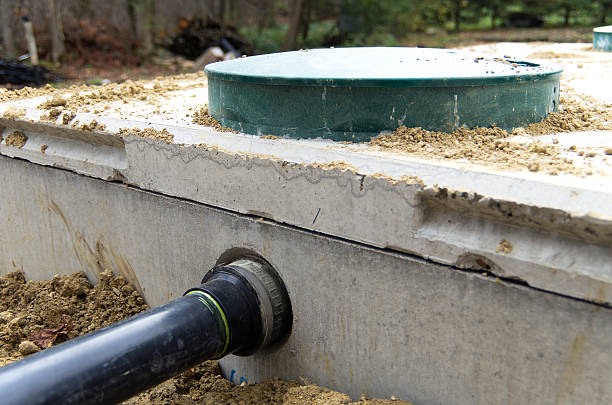
A septic system is a way of disposing of wastewater from a home or business. It is a wastewater treatment system that uses a septic tank to collect and treat wastewater from your house before it is released into the soil.
Schedule Service Online
Get a free estimate so you know what you're signing up for
"*" indicates required fields
For Emergency Services Call: 410-255-9300
The wastewater flows into the septic tank, separating into layers – solid waste settles at the bottom of the tank, heavier liquids remain in the middle, and lighter liquid (such as soapy water) floats to the top. Bacteria then break down the wastewater and helps reduce solids levels. The partly treated wastewater is then released into a drainage field or leaching bed, which filters out any remaining contaminants before releasing it back into the environment.
The United States Environmental Protection Agency (EPA) regulates septic systems and requires that they be designed and maintained properly to protect public health and the environment. They have environmental regulations in place to ensure septic systems are properly installed and maintained. These regulations are designed to ensure that septic systems don’t pollute the environment.
Why Do You Need A Septic System?
Septic systems are essential for any home or business that does not have access to a municipal sewer system.
- They provide an efficient and cost-effective way of disposing of wastewater, reducing the risk of contamination and water pollution.
- Septic tanks also reduce the amount of wastewater that would otherwise need to be transported offsite for treatment, reducing the burden on local water treatment plants.
- They also help protect the environment by preventing pollutants from entering rivers and lakes, ensuring a clean and healthy source of drinking water for everyone.
- Septic systems help reduce the risk of flooding and other water-related problems as they store wastewater until treated.
- They also reduce soil erosion and groundwater contamination, two key challenges that would otherwise be faced in areas without a septic system.
Parts Of A Septic System

Several key components of a septic system work together to treat wastewater. These include:
Septic Tank
This is the first component of your septic system. It is a large tank that collects wastewater from your home or business and separates it into layers (solids, heavier liquids, and lighter liquids). Bacteria then break down the solids and helps reduce levels of wastewater.
The tank is made from concrete, steel, or fiberglass and holds the wastewater from your house. As the wastewater enters the tank, solids settle to the bottom and are digested by anaerobic bacteria. Grease and oils float to the top, forming a scum layer. The liquid or effluent from the septic tank flows through an outlet pipe and into the drain field or leach field.
Distribution Box
This is a box that is connected to the septic tank. It distributes wastewater evenly among the drain field or leaching bed. This helps ensure that all parts of the field get an equal amount of wastewater and prevents clogging of any one section.
Drain Field/Leaching Bed
The drain field, also known as a leaching bed, is another part of your septic system. It is a series of pipes buried in the ground and have holes, or perforations, to allow wastewater to seep out. The drain field/leaching bed filters out any remaining contaminants before releasing them into the environment. Alternative systems use pumps or gravity to help septic tank effluent move through the system.
Risers
Risers are used to bring the septic tank and drain field above ground level. This makes it easier to access them for regular inspection, maintenance, and repair. Risers also help protect your septic system from flooding and other weather-related damage.
Types Of Septic Systems
You can choose from several types of septic systems, depending on your location, budget, and needs. These include:
Conventional Gravity Septic System
This is the most common type of septic system. It uses gravity to move wastewater from the septic tank through a drain field or leaching bed. This type of system is ideal for homes with a large drain field area.
Pressure-Dosed Septic System
This septic system uses pressurized water to move wastewater from the septic tank through the drain field or leaching bed. It is more efficient than a gravity septic system and is great for locations with limited space for a drain field.
Aerobic Treatment Unit (ATU)
This septic system uses oxygen to break down and treat wastewater before it is released into the environment. It is more efficient than other types of septic systems, requires more maintenance, and can be more expensive. This type of septic system is great for areas with high water tables or limited space for a drain field.
Tools For Installing A Septic System
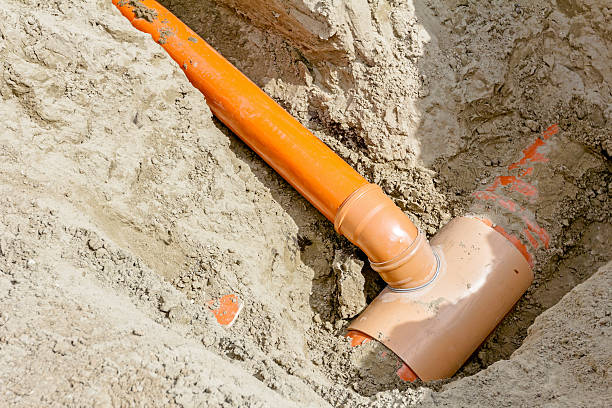
Installing a septic system can be complicated and requires the use of specialized tools. Some common tools that you will need include:
- Shovel: This is an essential tool when it comes to digging the septic tank, drain field, and distribution box.
- Backhoe: This is a large piece of equipment used to dig trenches for the pipes that connect the septic system components.
- Trencher: This tool creates narrow trenches for laying pipe in hard-to-reach areas.
- Level: This tool is used to ensure the septic tank, distribution box, and drain field are level before installation.
- Compactor: Once the soil has been dug up for the installation of the septic system components, a compactor is used to compact it to support the weight of a septic system.
- Septic Tank Liner: This is used to line the septic tank, which helps protect it from any corrosion or other damage.
- Pumps And Alarms: These are used in some systems to ensure that wastewater is properly treated and pumped out.
- Drainage Pipes: Used to carry wastewater from the septic tank to the drain field or leaching bed, where it is filtered before being released into the environment.
How To Install A Septic System

Installing a properly functioning septic system requires specialized knowledge and experience. It is important that you consult with a professional before embarking on this project. Generally speaking, the steps for installing a septic system include the following:
Planning And Designing
This involves researching local regulations, determining the size of your septic system, and choosing the type that best suits your needs.
Digging Trenches
The next step is to dig a number of trenches for the pipes, septic tank, and drain field/leaching bed.
Installing Components
Once the trenches are dug, you can begin to install the septic tank, distribution box, and other components of your septic system.
Laying Pipe
This step involves connecting all the components of your septic system with drainage pipes.
Installing A Liner
Once the septic system’s components are in place, a liner is installed to protect against any corrosion or damage.
Backfilling
This is when you fill in all the trenches with soil and compact it so that they can support the weight of your septic system.
Testing
The last step is to test your septic system to ensure it is installed correctly and properly functioning.
Other Important Tips For Installing A Septic System
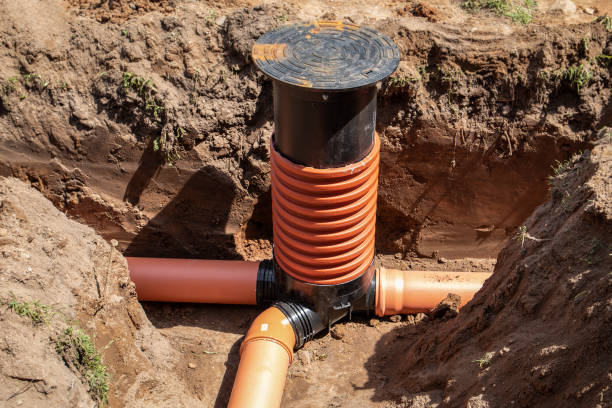
- Know Local Regulations: Knowing any local regulations or requirements before beginning your septic system installation is important. These local laws may have rules around septic tank inspection and maintenance. Depending on where you live, you may also need a permit from your local municipality before beginning the installation.
- Use Quality Materials: When installing a septic system, using quality materials is essential for its longevity and efficiency.
- Choose The Right Location: Carefully consider your septic system’s location, ensuring it is not too close to any trees or other plants that could be affected by wastewater runoff.
- Hire A Professional: Installing a septic system can be complicated and requires specialized knowledge. Consider hiring a professional to ensure correct installation.
- Keep Records: Keep detailed records of your septic system installation in case you need to refer to it in the future.
- Test Regularly: It is important to test your septic system regularly to ensure it functions properly. This will help you identify any potential issues before they become serious problems.
- Maintenance: Regular maintenance is key for the proper functioning of your septic system and avoiding costly repairs or replacements.
Septic System Maintenance

Maintaining your septic system is essential for keeping it working efficiently and avoiding costly repairs down the road. Some simple maintenance tips include:
- Regular Pump-outs: It’s important to have your septic tank pumped out every three to five years, depending on your tank size and usage.
- Avoiding Chemicals: Chemicals like bleach and ammonia can damage the bacteria in your septic system, so it’s important to avoid using these products.
- Protection From Damage: Septic systems are delicate and can easily be damaged if not handled properly. It is important to keep heavy vehicles and objects away from the septic tank and drain field to prevent damage.
- Water Conservation: Water conservation is important for maintaining a healthy septic system. Regularly using water-saving fixtures such as low-flow toilets, showerheads, and faucets can help reduce water usage and extend the life of your septic system.
- Monitoring For Signs Of Problems: Keep an eye out for any signs of a malfunctioning septic system, such as wet spots in the yard or slow drains.
- Calling A Professional: If you notice any problems with your septic system, it’s best to contact a professional who can diagnose and repair the issue.
If the septic system is properly maintained, the tank can last 15 to 40 years, while the leach field may be useable for more than 50 years. So stay on top of these important maintenance tasks to help keep your septic system healthy and functioning for as long as possible.
Need Professional Help?
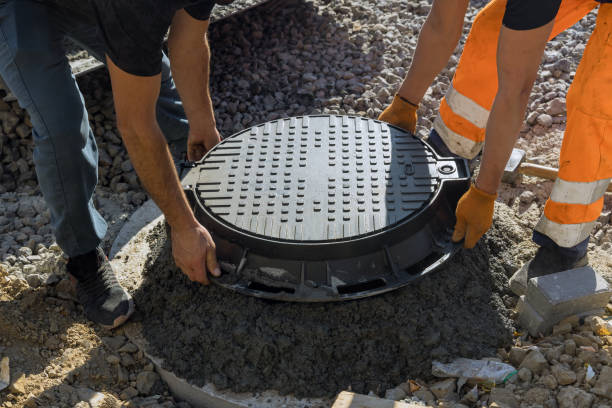
Installing or maintaining a septic system can be complicated and time-consuming, so getting help from a professional is important if you’re not sure what you’re doing. A septic system contractor can assess your needs, recommend the best system for you, and provide the installation and maintenance services needed to keep it running smoothly. Ultimately, a professional septic system contractor can help ensure your septic system is in good condition so you won’t have to worry about costly repairs down the road.
MD Sewer and Plumbing Service is the best choice for septic system installation and maintenance. Let us take care of your septic system needs so that you can enjoy peace of mind. Contact us today!

